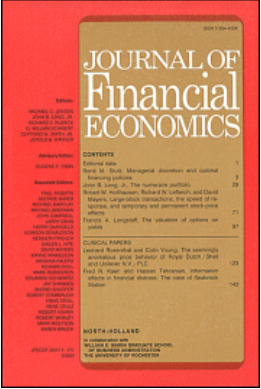Biodiversity finance
IF 10.4
1区 经济学
Q1 BUSINESS, FINANCE
引用次数: 0
Abstract
We study biodiversity finance—the use of private capital to finance biodiversity conservation and restoration—which is a new practice in sustainable finance. First, we provide a conceptual framework that lays out how biodiversity can be financed by pure private capital and blended financing structures. In the latter, private capital is blended with public or philanthropic capital, whose aim is to de-risk private capital investments. The main element underlying both types of financing is the “monetization” of biodiversity, that is, using investments in biodiversity to generate a financial return for private investors. Second, we provide empirical evidence using deal-level data from a leading biodiversity finance institution. Our findings are consistent with a three-dimensional efficient frontier (return, risk, and biodiversity impact)—deals with a favorable risk-return profile tend to be financed by pure private capital, whereas for other deals the biodiversity impact needs to be sufficiently large for blended finance to be used. Overall, our results suggest that blended finance is an important tool for improving the risk-return profile of these projects, thereby increasing their appeal to private investors and crowding in private capital. Finally, our results suggest that private capital is unlikely to substitute for effective public policies in addressing the biodiversity crisis.
生物多样性的金融
我们研究了生物多样性金融——利用私人资本为生物多样性保护和恢复提供资金——这是可持续金融的新实践。首先,我们提供了一个概念性框架,阐述了如何通过纯私人资本和混合融资结构为生物多样性提供资金。在后者中,私人资本与公共或慈善资本混合,其目的是降低私人资本投资的风险。这两种融资方式背后的主要因素是生物多样性的“货币化”,即利用对生物多样性的投资为私人投资者带来财务回报。其次,我们利用一家领先的生物多样性金融机构的交易级数据提供了经验证据。我们的研究结果与三维有效边界(回报、风险和生物多样性影响)是一致的——具有良好风险回报特征的交易往往由纯私人资本资助,而对于其他交易,生物多样性影响需要足够大才能使用混合融资。总体而言,我们的研究结果表明,混合融资是改善这些项目风险回报状况的重要工具,从而增加了它们对私人投资者的吸引力,并吸引了私人资本。最后,我们的研究结果表明,在解决生物多样性危机方面,私人资本不太可能取代有效的公共政策。
本文章由计算机程序翻译,如有差异,请以英文原文为准。
求助全文
约1分钟内获得全文
求助全文
来源期刊

Journal of Financial Economics
Multiple-
CiteScore
15.80
自引率
4.50%
发文量
192
审稿时长
37 days
期刊介绍:
The Journal of Financial Economics provides a specialized forum for the publication of research in the area of financial economics and the theory of the firm, placing primary emphasis on the highest quality analytical, empirical, and clinical contributions in the following major areas: capital markets, financial institutions, corporate finance, corporate governance, and the economics of organizations.
 求助内容:
求助内容: 应助结果提醒方式:
应助结果提醒方式:


